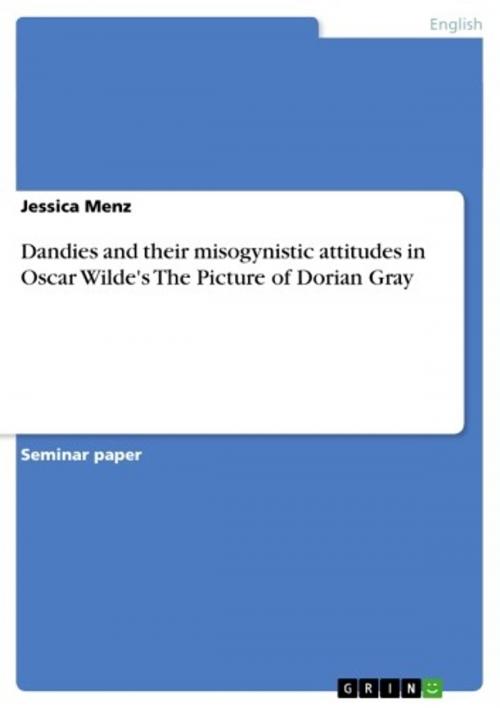Dandies and their misogynistic attitudes in Oscar Wilde's The Picture of Dorian Gray
Fiction & Literature, Literary Theory & Criticism, British| Author: | Jessica Menz | ISBN: | 9783640241767 |
| Publisher: | GRIN Publishing | Publication: | January 14, 2009 |
| Imprint: | GRIN Publishing | Language: | English |
| Author: | Jessica Menz |
| ISBN: | 9783640241767 |
| Publisher: | GRIN Publishing |
| Publication: | January 14, 2009 |
| Imprint: | GRIN Publishing |
| Language: | English |
Seminar paper from the year 2004 in the subject English Language and Literature Studies - Literature, grade: 1,3, University of Bayreuth (Lehrstuhl für Englische Literaturwissenschaft), course: 19th Century British Novels, 13 entries in the bibliography, language: English, abstract: Oscar Wilde's The Picture of Dorian Gray is a novel of the Victorian 'fin de siécle'. Its protagonists are dandies, who follow the principle of a so-called New Hedonism. Under the influence of the elder Lord Henry, Dorian Gray assumes his way of life, thinking and even his attitude to women. Actually the entire novel is shaped by a certain misogynistic culture that reveals itself in different forms. In this paper I am going to illustrate how the male characters, mainly the dandies Lord Henry and Dorian, use their voice to speak up against women, whereas the female ones remain voiceless most of the time. Apart from its fictional content, the novel is full with concepts that shaped Victorian society. To get a full understanding, I am therefore going to illustrate the novel's historical context and some of the phenomena of the Victorian '90s, for example, New Hedonism, Dandyism etc. I am then going to give a description of the dandies in the novel, Lord Henry Wotton and Dorian Gray, before illustrating their misogynistic attitudes. I will be looking for reasons as well as describing the different types of women that are in the novel, focusing on Sibyl, the most important female character in the novel.
Seminar paper from the year 2004 in the subject English Language and Literature Studies - Literature, grade: 1,3, University of Bayreuth (Lehrstuhl für Englische Literaturwissenschaft), course: 19th Century British Novels, 13 entries in the bibliography, language: English, abstract: Oscar Wilde's The Picture of Dorian Gray is a novel of the Victorian 'fin de siécle'. Its protagonists are dandies, who follow the principle of a so-called New Hedonism. Under the influence of the elder Lord Henry, Dorian Gray assumes his way of life, thinking and even his attitude to women. Actually the entire novel is shaped by a certain misogynistic culture that reveals itself in different forms. In this paper I am going to illustrate how the male characters, mainly the dandies Lord Henry and Dorian, use their voice to speak up against women, whereas the female ones remain voiceless most of the time. Apart from its fictional content, the novel is full with concepts that shaped Victorian society. To get a full understanding, I am therefore going to illustrate the novel's historical context and some of the phenomena of the Victorian '90s, for example, New Hedonism, Dandyism etc. I am then going to give a description of the dandies in the novel, Lord Henry Wotton and Dorian Gray, before illustrating their misogynistic attitudes. I will be looking for reasons as well as describing the different types of women that are in the novel, focusing on Sibyl, the most important female character in the novel.















